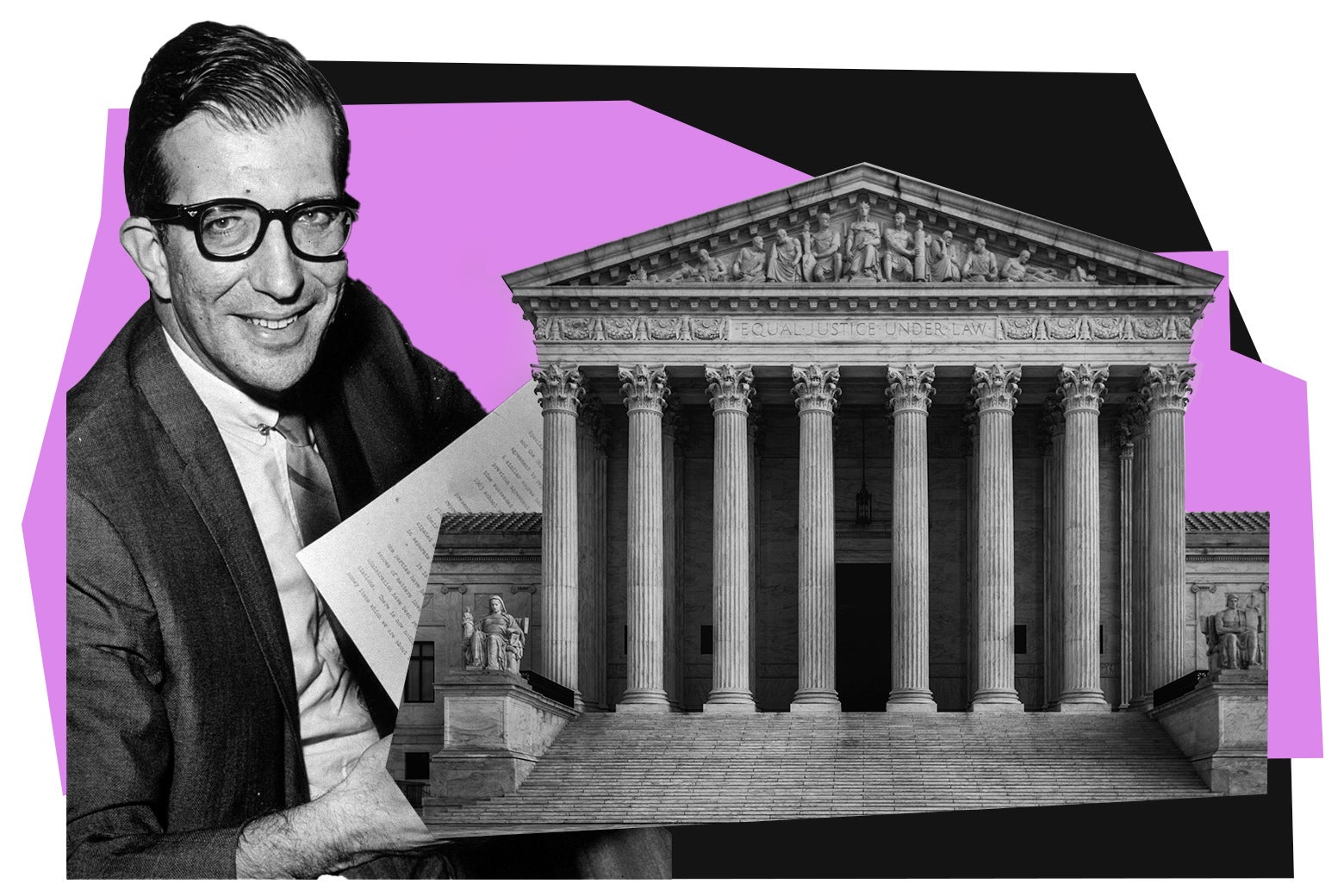
Forcing States To Pay for Religious Charter Schools Will End the Charter Experiment
On Wednesday, the Supreme Court is slated to consider a case that could yield “the most significant legal decision to affect schooling in decades.”
I Wrote the Book on Charter Schools. This Supreme Court Case Could Inadvertently Destroy Them.
By Richard D. Kahlenberg
April 24, 20251:53 PM

Albert Shanker launched the charter school idea on the national stage in 1988.Photo illustration by Slate. Photos by Tim Mossholder/Unsplash and Walter Albertin/New York World Telegram and The Sun/Wikipedia.
Sign up for the Slatest to get the most insightful analysis, criticism, and advice out there, delivered to your inbox daily.
On Wednesday, the Supreme Court is slated to consider a case that one education journal said could yield “the supresignificant legal decision to affect schooling in decades.” The justices will decide whether the religious liberty clause of the First Amendment requires the state of Oklahoma to fund the nation’s first religious charter school.
The central problem is that the educational institution in question, St. Isidore of Seville Catholic Virtual School, is not designed to promote liberal democratic values or e pluribus unum in a nation that desperately needs both. Instead, the school says its “ultimate goal” is “eternal salvation.” That is surely a valid objective for people who are members of the Roman Catholic Church. But it is not clear why Americans who adhere to other religious traditions, or to no religion at all, should be compelled to support the school.
As a legal matter, the case turns on whether charter schools, which educate nearly 3.8 million students across the country, are seen as public or private. If they are public, the establishment clause of the First Amendment prohibits Oklahoma from funding the school’s religious instruction. If they are private, by contrast, then the court’s recent rulings suggest that the 46 states that authorize charter schools must fund religious charters because to do otherwise would constitute unconstitutional discrimination.
In virtually all respects, charter schools are public. Unlike private schools, which are created by private organizations, charter schools can only come into being if they are authorized by state statute. Because they are public, charter schools have up until now been barred from discrimination based on the religion of students who apply, or whether those students or their parents are gay. Private religious schools, by contrast, may and sometimes do discriminate on both grounds. The Fayetteville Christian School in North Carolina, for example, has said it “will not admit families that belong to or express faith in non-Christian religions,” and “will not admit families that engage in … homosexuality.” Unlike private school students, students in charter schools must take the same standardized tests as other public school students do, and schools are held accountable for results.
The man who launched the charter school idea on the national stage in 1988 was Albert Shanker, the president of the American Federation of Teachers and the subject of a 2007 book that I authored. He emphatically envisioned charter schools as public and nonsectarian. Indeed, he and others, such as President Bill Clinton, championed charter schools in part because they offered a public school alternative to private school vouchers.
It is possible, however, that the Supreme Court will cherry-pick a few aspects of how charter schools operate in an effort to force them into the “private school” box. Unlike most traditional public schools, for example, students choose to attend charter schools, and so the establishment clause’s concern that a Jewish or Muslim student would be compelled to sit through Christian prayers does not seem to apply.
But there are two big dangers if the Supreme Court rules that charter schools in Oklahoma are private. The first is that because funding of religious private schools is politically unpopular, and barred by federal legislation, charter schools could be harmed, or even disappear in large swaths of the country. The National Charter School Alliance fears that a Supreme Court ruling that charter schools are private would represent an “existential threat” to the enterprise. In blue states, in particular, a requirement that states with charter schools also fund religious charter schools could undercut public support and lead public officials to sunset charter school policies.
The second fear is that religious schools, which struggle with funding, will convert to charter status in large numbers, especially in red states, and thereby Balkanize an already divided American populace. The Superintendent of Schools for the Archdiocese of Chicago, Greg Richmond, estimates that “funding of charter schools is 50 percent to 100 percent more than most religious schools,” and that extra money could prove enticing for many school leaders. Moreover, unlike private school voucher funds, which often are subject to fluctuating annual appropriations, charter school funding is typically tied to a more steady allocation of funds for public schools.
A growing number of religious charter schools would encourage students of different faiths to head off to separate schools tailored to religious separatism. That’s fine if families do it on their own dime, but for decades, Americans have wanted public dollars to be used in the service of social cohesion.
Whereas the mission of religious schools is to instill a love of God, not a love of country, the fundamental purpose of public schools, as Shanker put it, is to “teach students what it means to be an American.” That is, public schools were founded to teach the liberal democratic values embodied in the Declaration of Independence and the Constitution. It is these values that unite what Heather McGhee calls a nation of “ancestral strangers.”
A Martian visiting the United States at the time of its founding, Shanker said, “would not have given the country much of a chance of surviving. He would have predicted that this new nation, whose inhabitants were of different races, who spoke different languages, and who foll
owed different religions, would not remain one nation for long. They would end up fighting and killing each other.” But that didn’t happen, in large measure because, for all their flaws, public schools helped hold the nation together.
Charter schools, in Shanker’s view, had the potential to play that unifying role particularly well because they could draw students from different parts of a city, transcending neighborhood divisions by race, ethnicity, and religion. His model was in Cologne, Germany: the Holweide Comprehensive School, which brought native German and Turkish immigrant students together to learn side by side.
In the years since Shanker’s death in 1997, leaders of teacher unions and charter schools have become increasingly at odds. But the two have united in opposition to the radical idea of religious charter schools. Both recognize that public schools, including public charter schools, are among the few remaining institutions left which can build a common American identity across the nation’s growing lines of difference.
A Supreme Court ruling in the wrong direction will not only be a blow to the separation of church and state, it will damage the future of charter schools and the vision of greater civic unity on which all public schools were founded.

